
by Chelsea Williams | Oct 1, 2020 | Warehousing
COVID-19 has affected every link in the supply chain, from the top down to the bottom. Trade and travel are restricted. In-store shopping has slowed to a crawl. The pandemic has caused shifts in consumer behavior that have led to widespread disruption.
Luckily, the supply chain has been quick to respond and adapt, finding creative ways to work within this “new normal” and survive. But because of these changes, retailers and warehouses alike aren’t sure what to expect moving into this upcoming holiday season.
Everything has changed. Many have relied on historical data and traditional forecasting methods to anticipate their needs, but that may not be enough this year to provide a clear picture. This means that the entire supply chain will need to prepare.
What Shopping This Holiday Season Will Look Like
Customers are more concerned than ever about contracting a virus now as temperatures cool and activities move indoors. Because the virus is more easily transmitted indoors, these activities, including in-person shopping at brick-and-mortar stores, will slow down considerably.
Experience-based gifts like vacations, memberships, and season passes are no longer trending, thanks to the uncertainty that COVID-19 continues to bring. Many have had to cancel vacations this year and wait to see how the pandemic evolves before rescheduling them, which likely won’t be known until 2021. This has created a greater demand for bigger-ticket gift items as a consolation prize for enduring this whirlwind of a year.
Online shopping is quickly becoming a favorite pastime. Because many traditional entertainment sources are no longer viable, consumers don’t have much else to occupy their time. This points towards a much earlier start to the holiday shopping season than in previous years.
On top of that, many major retailers have publicly stated that they will not open their doors on Thanksgiving Day, as they have in years of the past. Big-box retailers like Best Buy, Target, and Walmart have all decided to close their doors over the holiday. The jury is still out on what this means for Black Friday and its in-person deals.
All of these signs point to one outcome: a massive increase in online sales.
What This Means for Warehouses
Preparation is necessary
COVID-19 has thrown a wrench into the spokes of how warehouses traditionally prepare for the holiday season. Where previously, warehouses would slowly begin preparing during early fall for an influx of sales in late November, now the burden is expected to be much heavier much sooner.
This means that your warehouse will need to start preparing much earlier than usual and be ready for the holiday season to last longer than you are used to. It’s critical that you implement the right technology and procedures to ensure a smooth operation.
Technology plays a major role
Rugged tablets and mobile computers purposefully-designed to withstand the rigors of a warehouse environment will be instrumental. When paired with the right barcode scanners, they allow you to ensure that data collection and transfer is conducted quickly and accurately.
On top of that, you need to ensure your products are correctly labeled and can be quickly identified for faster order picking and fulfillment, which calls for efficient printing and labeling solutions.
You’ll need to increase your workforce and bring on seasonal workers to meet the anticipated demand, so it’s critical that you make sure they are well-equipped. You may need to invest in more devices so that you can make sure your workers can do their jobs efficiently. Many rugged devices today look and feel like cell phones, making it easy for temporary workers to get up to speed on processes and how to use the device. Honeywell’s CT40 and CT60 are good examples of this intuitive design that doesn’t sacrifice the durability needed in a warehouse environment.
Managing all of these devices can be difficult. Some may die mid-shift, and others may malfunction or break in such a fast-paced environment. This calls for a quick and efficient means to replace or repair these devices. If you don’t have the in-house resources at your disposal, it may be worth it to look into professional services that can conduct repairs, training, and configuration.
Safety is paramount
It’s important to remember that COVID-19 has placed increased restrictions and safety guidelines that warehouses will need to work with. Though you’re probably already acclimated to those changes, it’s easy to forget them when planning for your future needs.
Your workers, especially new hires and seasonal workers, will need to be trained how to work quickly while maximizing safety. You’ll need to go over best practices with employees, encourage social distancing, and avoid high-congestion areas. It may be worth implementing one-way floor plans to reduce face-to-face contact, and ramp up mobile communication efforts so that workers don’t need to spend as much time face-to-face.
Consider implementing:
- Safety signage and visual reminders to keep a safe distance from one another
- Temperature verification solutions to ensure secure access only to people without fevers
- Mobile carts and workstations so workers can take devices on-the-go
- Protective PVC shields
- Antimicrobial coatings for your devices
- Sanitizing solutions, like hand sanitizer and UV-light solutions
- Personal protective equipment like masks, shields, and gloves
Meeting the Demands of the New Normal
COVID-19 has hit retailers and warehouses hard. It has ushered in enormous changes in consumer behavior and has tested the supply chain’s agility. The upcoming holiday season will push the supply chain to its limits.
Warehouses will need to stay focused so that they can adequately prepare. They will require a blend of the right technology and best practices in order to maintain efficient workflows, keep employees safe, and meet the increased and evolving demands.
Informs, Inc. can assist you with your technology needs. We provide industry-leading technology designed to keep your warehouse operating at peak efficiency. Our experts understand what it takes to run a successful warehouse. We can help you find the right solutions and provide you with guidance on how to leverage them to truly optimize your warehouse.
For more information on our technology and what the folks at Informs can do for your business, contact us today!
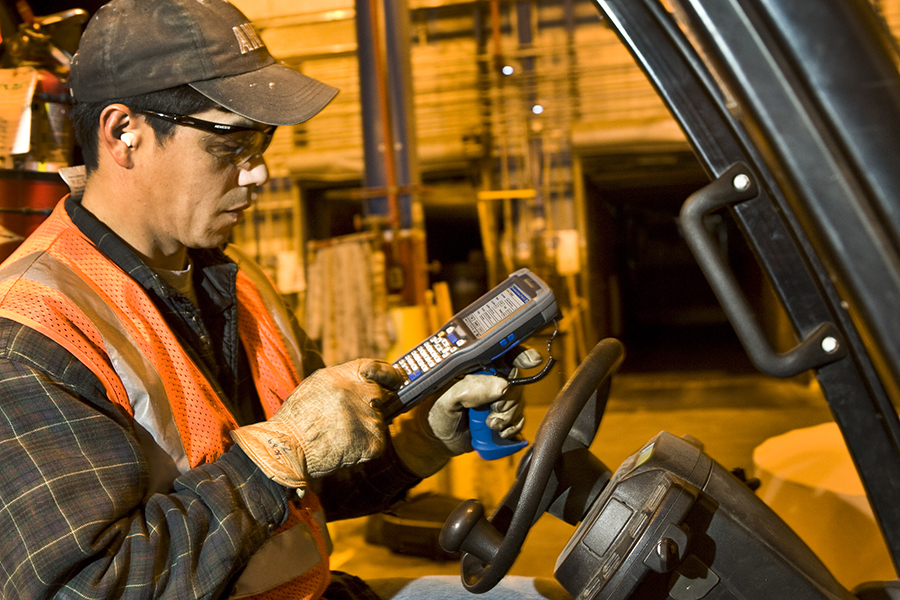
by Chelsea Williams | Aug 6, 2020 | Mobile Computing, Warehousing
For years, healthcare environments have been relying on specially designed devices made to help mitigate the risk of infection. Now the risk has transformed, and the most dangerous places that viruses could be lurking aren’t just found in hospitals. They can now be found in retail stores, warehouses, and any other place where people congregate for any amount of time.
Distribution centers and supply chain manufacturers must ramp up safety efforts by taking a page from the healthcare industry and implementing tools, policies and devices designed to reduce the spread of pathogens. Consider these tips when selecting (and keeping clean) the right mobile devices for your operation:
1. Consider Devices Made from Disinfectant-Ready Plastics
Some devices are made with special plastics that are designed to withstand strong cleaners and multiple cleanings without cracking or corroding. Make sure your tech stack includes the most rugged and disinfectant-ready devices for your applications. This will help extend the lifecycle of the device as well as keep reduce the spread of germs. Pay strict attention to the suggested cleaning and care instructions from the device manufacturer and implement a protocol that ensures all employees are cleaning devices according to best practices and at recommended intervals throughout the day.
2. Implement Anti-Microbial Products
There are devices on the market with anti-microbial properties. This essentially means that these products have silver-ion embedded right into the plastic on the device. Because silver impedes the growth of deadly organisms, it can reduce the risk of spreading infection from person to person via the device.
This additive has become increasingly popular, especially recently. You can find everything from screen protectors, to tablets, to mobile computers with silver ion embedded in the surface, so that your workers can effectively do their jobs while lowering the risk of germs spread.
3. Leverage UV Light Solutions
When UV light is used as a sanitizing solution, it can eliminate 99.9% of all germs. UV light solutions allow your operation to place smaller mobile devices, like Honeywell’s Dolphin CT60, inside a compartment that once shut, activates UV light to disinfect the device within minutes.
This solution is not only incredibly effective, but it also does all the sanitization work for the user. Employees get the peace of mind that the devices they are using are fully cleaned and sanitized 100% of the time, without having to clean the devices themselves.
4. Develop Cleaning and Disinfecting Guidelines
When it comes to cleaning and disinfecting your devices, it’s important that you develop a regular cleaning schedule and follow the recommended best practices for ensuring your devices are properly sanitized.
A standard microfiber cloth is ideal for wiping away fingerprints, surface grime, and smudges from your devices. Pathogens can live in the oil in these smudges and fingerprints, so cleaning them with a microfiber cloth can help reduce the transmission of germs, but it does not eliminate all bacteria or completely sanitize devices.
To completely disinfect your devices, you will need to consult the manufacturing guidelines for each individual device. Develop a regular disinfecting schedule and communicate instructions to your employees for when and how a device should be properly cleaned. Make this information available at the device’s charging station, and include instructions for both wiping down devices and thoroughly sanitizing them, as well as how often you should carry out each.
5. Promote Best Practices for Good Hygiene
Above all else, each employee must practice good personal hygiene to ensure everyone stays safe. Provide each worker with personal protective equipment, such as masks and gloves. It’s also important that they maintain a safe distance of at least six feet between employees.
Make sure your workers know the proper sanitary guidelines to follow. Everyone should be covering their mouths and noses whenever they cough or sneeze and h and washing should be carried out often. Scrub with soap and warm water for at least 20 seconds, and dry hands thoroughly with a disposable towel. If soap and water aren’t readily available, hand sanitizer can be substituted. Make sure you use a 60% alcohol-based hand sanitizer in between hand washings.
These best practices have been followed in healthcare environments for decades. Now that everyone, not just healthcare workers, needs to keep safety top-of-mind, we can all take a page out of the healthcare industry’s handbook and implement these same best practices for industrial environments.
Informs provides best-in-class solutions that can be easily cleaned and disinfected to help you mitigate the risk of virus spread and protect your workers. For more information, contact an expert at Informs today.
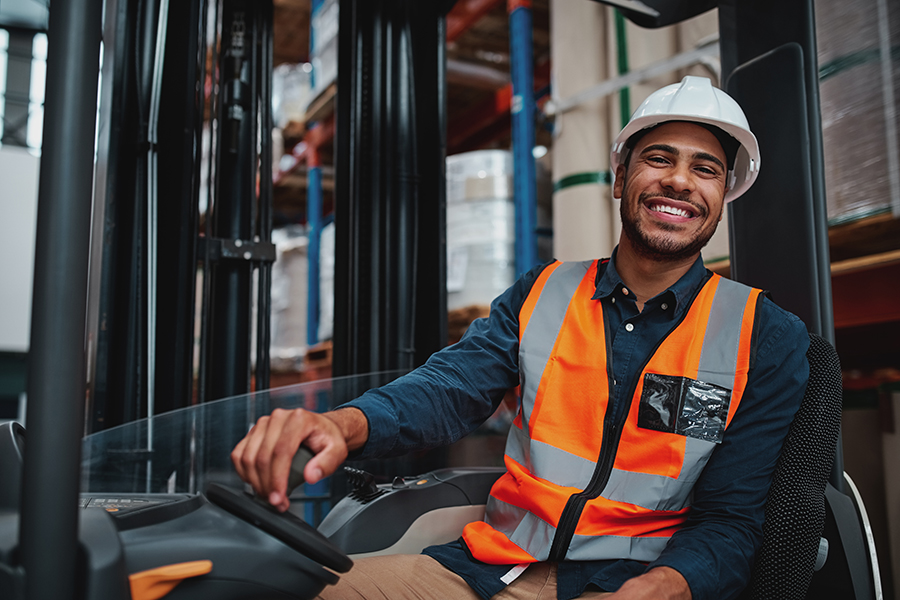
by Chelsea Williams | Jun 19, 2020 | Warehousing
Despite the fact that over 306 million Americans (95% of the U.S. population) are still affected by stay-at-home orders, that hasn’t stopped them from purchasing products. Online retail has seen massive growth during the coronavirus pandemic. In the U.S., retailers’ online revenue growth is up 68% as of mid-April, surpassing an earlier peak of 49% in early January.
Clearly, COVID-19 has changed retail, possibly permanently. Its initial impact on eCommerce is creating changes to the way we conduct online selling and services in ways nobody imagined.
The pandemic has left the supply chain reeling, but the industry has proven its resilience time and time again. As production ramps up, the warehouses and distribution centers that leverage innovation will be the most successful in meeting modern day demand.
Here are a few tips for achieving breakthrough results:
Mobility, Mobility, Mobility
Shipping used to take an average of three to five days. Those days are long gone. The industry moved swiftly to two-day shipping in order to keep up with giant online retailers, and it will only continue to increase until we see same-day shipping across the board.
With unprecedented speeds like this, the supply chain can’t afford a single second of downtime. Even a single dropped connection or poorly performing application on a handheld device per shift can cost as much as 100 minutes in lost productivity. That is the equivalent of 23% of a worker’s daily shift.
For this reason, it is imperative to increase your enterprise mobility with the right tools and processes, starting with your OS.
While Windows used to be the dominating OS, Android has usurped its position. It now reigns supreme as a mobile operating system, and for good reason. Its open platform gives manufacturers the flexibility to develop an array of devices and form factors that meet the needs of everyday application. Here are some of the latest devices that are helping supply chain operations meet modern day demand:
EDA61K
This rugged handheld mobile computer is ideal for warehouse productivity. It automates and error-proofs workflows in both indoor and outdoor environments like warehouses, distribution centers, and retail backrooms.
What makes this device so special?
Well for one, the battery lasts for two to three shifts on a single charge, which means it will never die on you mid-shift. It also boasts a unique combination of warehouse features, with 4G LTE cellular to help workers stay connected. Plus, it comes with both alphanumeric and numeric keypad options for a better worker experience and easier data entry.
RT10 tablet
This enterprise-grade tablet is built for rapid user adoption, and is designed to minimize the total-cost-of-ownership by giving users the flexibility of using a single device for all use cases.
Its FlexRange scan engine features two complete optical paths. Unlike its competitors, these paths have no moving parts, which enables it to simultaneously capture near- and far-range images without latency.
VM3A vehicle mount computer
This full-sized vehicle-mount computer provides forklift and other vehicle operators with access to data entry applications right at their fingertips, which streamlines workflows and minimizes errors.
The VM3A is available on Android 9 Pie, with upgrades through Android R. It is designed to withstand the rigors of industrial vehicles, and offers a field-replaceable panel to repair touch or keyboard issues without needing to send it in for repair. It also features a Smart Dock, which allows it to be easily docked and removed during vehicle or shift changes.
Honeywell Makes it Easy to Upgrade Android OS
Though the shift from legacy Windows to Android OS is ongoing, Honeywell has remained ahead of the curve, making it easy for warehouse operators to migrate over. In addition, Honeywell even makes it easy to migrate applications from one version of Android to another, via its industry-leading Mobility Edge platform.
Accelerate Deployments
With Mobility Edge, you can deploy faster, easier, and at a lower cost. Warehouses can leverage versatile out-of-the-box capabilities and a rapid provisioning suite. Mobility Edge also expedites development, certification, setup, and training involving multiple form factors at once.
Optimize Business Performance
Powerful, embedded tools across the platform drive faster data capture and secure, enhanced worker communications. This streamlines your entire warehouse for maximum productivity.
Extend Lifecycle
Mobility Edge reduces TCO and minimizes headaches with an enterprise-wide approach to maintenance releases. The hardware is designed to support ongoing upgrades to the operating system through Android 13 (T) and extended support 5 years beyond that, which is longer than any competitor products, and spans across more devices as well.
Strengthen Security
With the unified, dynamic hardware-and-software platform that Mobility Edge provides, Honeywell has taken an agile approach to enabling enterprise IT to deliver better mobile solutions across your business.
Making Sense of the Data to Drive Better Decisions
The right devices, platforms, and operating systems won’t be enough to completely improve warehouse productivity without the right analytics software. Honeywell’s Operational Intelligence analytics software includes four modules that work together to help IT teams manage and optimize assets across all locations, throughout the asset lifecycle.
With Operational Intelligence, your IT resources gain performance analytics to help predict issues with device health and maintenance even before they occur. It does this by tracking device and application usage, gathering data to help analyze worker performance and workflow efficiencies. With this, you can easily identify any bottlenecks and solve issues that are diminishing warehouse productivity.
Boosting productivity is essential now and will only become more essential in the future as we move towards same-day shipping. To truly optimize your workflow, it is necessary to have the right tools in place. Informs, Inc. offers a wide range of devices designed for this purpose as well as the expertise to implement them. For more information, contact the experts at Informs.
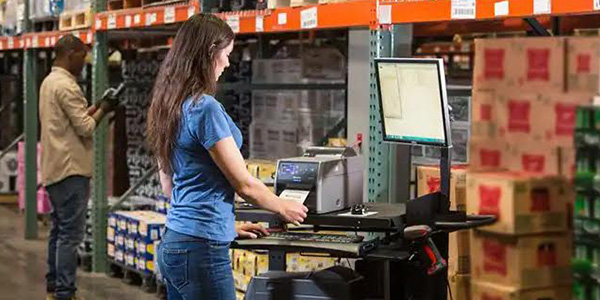
by Chelsea Williams | Apr 20, 2020 | Manufacturing, Printing, Warehousing
With high competition and increased demands for speed and efficiency, warehouse operators must always be on the lookout for ways to improve productivity. Mobile cart workstations are built for just that. The ability to take your work process mobile has many time-saving and cost-saving benefits, especially for those in warehouses and factory settings, where efficiency depends on mobility.
Here are five reasons your warehouse may want to look into mobile cart workstations:
Accelerate Data Capture and Inventory Handling
While it may not seem like it, the ability to keep employees closer to the point of activity saves significant time. True, you may shave only a few seconds off the time it takes for an employee to walk back and forth to a fixed station, but that adds up over time.
By scanning and printing right at the source, you can increase quality, accuracy, and speed of data capture. When processes are more efficient, your workers can have more time to do their jobs thoroughly and double-check the quality of their work, as well. Having a mobile computer, printer, and scanner station allows employees to take their work with them, saving on both time and labor costs by equipping workers to work more productively.
Empower Your Employees Without Limiting Capabilities or Compromising Accuracy
A mobile cart workstation allows you to improve efficiency in many ways. In addition to computers, printers, and scanners, a mobile cart offers workers access to critical business systems. They can have instant access to their WMS system, ERP, and other network applications, no matter where they are in the facility.
Mobile carts empower workers to perform daily transactions and tasks without limiting their capabilities or compromising accuracy. They’ll no longer have to spend cumulative hours walking back and forth between the receiving and storage areas just to input data and print labels. They can also eliminate bottlenecks in the inventory process, helping to streamline employee workflow and free up more space in the warehouse by doing away with fixed workstations.
Improve the Return Process
Returns are often a necessary evil. The different ways each returned product must be processed tends to place a burden on warehouse operations and slow down productivity. With a mobile workstation, the workers responsible for processing returns will have the necessary information they need right at their fingertips. Mobile carts offer access to inventory, accounting, data capture, and order system information so they can quickly determine the ultimate disposition of the returned merchandise.
With the ability to have updates to data reflected in the inventory system in real time, workers can fulfill new orders, while customers can be credited faster. This not only improves productivity within your workflow, but it increases customer satisfaction.
Eliminate Extension Cords and Power Strips
Large industrial extension cords are not just merely an eyesore—they’re hazardous to the health and safety of your workers and equipment. A mess of extension cords makes your warehouse floor look messy and unprofessional, and it poses a risk to busy employees that can easily trip and fall. Any assets they are carrying may be damaged, but more importantly, your employees themselves may be injured.
A mobile computer station solves this problem by utilizing a rechargeable power pack, which eliminates the need for a wired connection to the mains. The batteries on mobile cart workstations are built last a full shift. Some even last up to 15 hours. Essential components like monitors and keyboards are built into the mobile computer station, so there are no wires needed to connect them together.
A Happy Employee is an Efficient Employee
Employees can quickly become demoralized if they realize they are working in an inefficient environment. Workers want to know you value their time, and don’t want to waste their hard labor walking back and forth unnecessarily from the point of data capture to the stationary computer.
Mobile workstations eliminate the need for trips across the warehouse, and enable workers to carry less equipment with them back and forth. By providing your employees with a mobile cart, you are making their jobs more comfortable and untethering them to stationary workstations, allowing them to increase productivity and output.
Conclusion
The times are changing, and warehouses now must embrace new ways to improve mobility and streamline workflow. Over the course of the week, mobile carts can eliminate hours of time spent on unnecessary trips, greatly improving speed and efficiency all around.
Informs, Inc. offers these ergonomically-designed mobile computer stations for enterprises looking to increase productivity and improve quality of life for workers on the job. By investing in mobile carts, you can equip your employees to speed up processes, and set yourself up to stay competitive and profitable in your industry. For more information on our mobile cart workstations, contact Informs today.
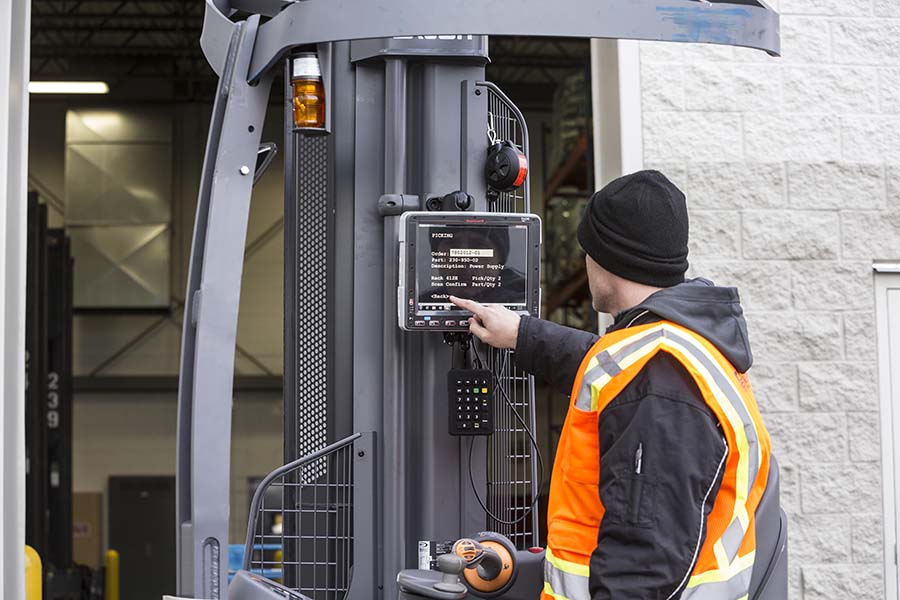
by Chelsea Williams | Jun 26, 2019 | Mobile Computing, Uncategorized, Warehousing
Windows had announced it is ending support for its Windows-embedded devices. This has caused manufacturing and warehouse operators to go on a frantic search for a new operating system (OS) for their enterprise mobile devices before the end-of-life goes into effect.
While transitioning to Android devices may seem overwhelming and complex, manufacturers such as Honeywell offer business solutions to take control and unify the process, effectively simplifying the transition. Honeywell built a mobile device platform to help navigate this transition: Mobility Edge.
Filled with cutting-edge solutions, download our complete product catalog here.
Here are just a few of the reasons why you should consider enterprise mobile devices built on the Mobility Edge platform:
A Unified Mobile Device Platform
The Honeywell Mobility Edge provides a unified hardware and software platform for all form factors, which allows for rapid deployments and great performance. Designed for Android, it is composed of common hardware, a common OS with support for multiple generations of Android, and a common software ecosystem that includes Honeywell software, as well as Honeywell-approved independent software vendors (ISVs).
Overall, this unified platform enables enterprises to streamline deployment and management for enterprise mobile devices, which improves efficiency and reduces cost, effort, and risk. It also helps to reduce the demands placed on the IT department.
Extended Lifecycle Means Less IT Frustration
Android enterprise devices, especially those built on the Mobility Edge platform from Honeywell, are renowned for their long lifecycles. In fact, enterprises can get six full years of life through 2025 when they invest in a Mobility Edge device from Honeywell. Not only that, but they can receive security support through the next five versions of Android.
The Mobility Edge platform also includes other features that extend the lifespan of enterprise mobile devices and provide a maximum return. The battery optimizer provides information about current charge and battery health. Users can choose different optimization profiles that can work to extend the available runtime of the battery pack. A self-diagnostics feature also allows users to identify and diagnose basic device issues, reducing the demand on IT.
Minimized Security Risks
An unmanaged device poses a security risk, which can be devastating to enterprises. When devices aren’t updated regularly and necessary security patches aren’t installed, cyber criminals have an opportunity to act, with some serious consequences. IBM reported the average cost of a security breach is up 6.4% to $3.86 million.
Honeywell provides regular security patches for Mobility Edge devices at least every 90 days—sometimes as frequently as every 30 days. This helps ensure that all devices on the Mobility Edge platform are secure, and data is protected.
Take Advantage of Honeywell’s Mobility Edge Platform
Honeywell is launching new enterprise mobile devices with the platform already installed. As the only company that guarantees support through Android R, Honeywell’s Android enterprise devices are future-proof and built to last.
- Dolphin CN80—an ultra-rugged device that features both a keypad and a large touchscreen interface for speedy and efficient data entry.
- Dolphin CT60—a durable and versatile mobile computer with a long-lasting battery and high-performance scanning.
- Dolphin CT40—a full-touch mobile computer with a five-inch display that acts as an intuitive tool, optimized for long shifts and comfortable use.
- Dolphin CK65—a rugged mobile computer with flexible data entry options and enhanced scanning read ranges of up to 15.2m (50 ft.).
- Thor VM1A—a leading vehicle-mounted computer that has been upgraded to the Mobility Edge platform, and can be used on multiple vehicles.
Interested in learning more about the enterprise mobile devices built on the Mobility Edge platform and how they can help you navigate the transition from Windows to Android? Contact Informs, Inc. today.
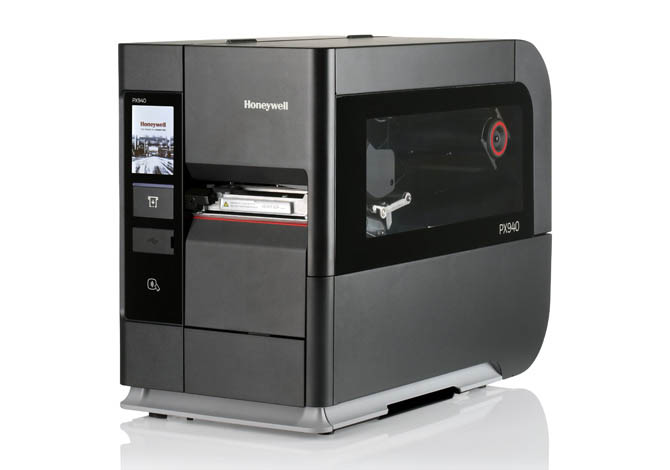
by Chelsea Williams | Jun 19, 2019 | Barcode Scanners, Warehousing
Unreadable barcodes are at best a nuisance, and at worst, a costly mistake that can cause major issues throughout the supply chain. Not only could your warehouse have heavy fines and charge backs levied against you, if you are a repeat offender, you may find your reputation is damaged.
To avoid this, warehouse operators can implement barcode verification systems to help eliminate unreadable barcodes and improve productivity within their operation.
Here are a few reasons why you may want to consider implementing barcode verification:
Eliminate Downtime
Bad barcodes have the potential hold up production. In a fast-paced industry like yours, this can cost you thousands, especially if it continues happening. Barcode verification processes ensure that each code is high-quality, and can easily be read and scanned. This eliminates costly downtime and helps save money on production costs.
You can further reduce errors by investing in quality printing equipment and supplies. Ensure you have the right media for your labels, and your print head stays well-maintained. Low-quality labels can scratch the print head, causing damage that result in unreadable labels. Incompatible media can cause barcodes to fade or smudge. Prevent issues like this from occurring by investing in high-quality consumables.
Save Money
Some operations are subject to costly back charges and fees from big box retailers. These retailers charge for inconvenience when items have unreadable barcodes. Over time, this can end up costing your operation more than you can afford.
Barcode verification can ensure you are printing accurate and readable barcodes, which eliminates these costly charges and fees. Again, ensure you are also using the right printing supplies. The adhesive needs to meet your needs and stick securely to the material you are attaching the labels to without leaving deposits or jamming up the printer. Your print head should always be clean and free of dust or residue.
Make sure your labels are also compliant with any applicable industry regulations, especially when it comes to the healthcare industry’s unique device identification (UDI) compliance regulation, which ensures products can be traced from manufacturing through disposal.
Choose Unsurpassed Accuracy in Your Barcode Printer
Choosing the right printer and barcode verification solution takes a lot of research, and the best option for you can depend on your individual needs. In general you want to make sure you look for a solution with high precision and accuracy. Look for a printer that can print labels in the size you need, clearly and accurately. This is especially important for those printing smaller barcode labels.
A quick way to ensure you achieve 100% accuracy every time is by choosing a printer with integrated label verification, like the Honeywell PX940 printer. The integrated label verification technology checks and ensures that your labels are accurate, notifying you of pass/fail status as soon as labels are printed.
Conclusion:
While no printer is 100% fail-safe, and you will always find some labels are unreadable, it doesn’t mean you have to damage your bottom line and cut your losses when this happens. Barcode verification can catch these errors before they are sent out, allowing you to avoid costly fees and keep your high-integrity reputation intact.
To learn even more about barcode verification, download The Manufacturer’s Guide to Barcode Verification here.
Informs offers innovative barcode verification solutions that ensure your barcodes are always readable and accurate. For more information on how barcode verification can help you improve your bottom line, contact us today.







Recent Comments